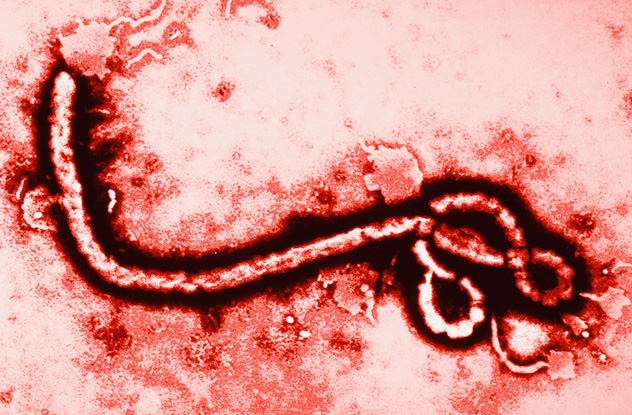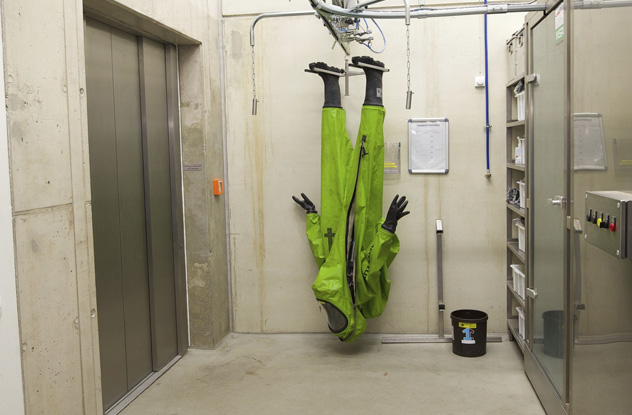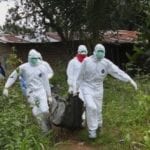 Music
Music  Music
Music  History
History 10 Less Than Jolly Events That Occurred on December 25
 Weird Stuff
Weird Stuff 10 Funny Ways That Researchers Overthink Christmas
 Politics
Politics 10 Political Scandals That Sent Crowds Into the Streets
 Weird Stuff
Weird Stuff Ten Bizarre Facts About The Doge Meme
 Our World
Our World 10 Ways Your Christmas Tree Is More Lit Than You Think
 Movies and TV
Movies and TV The 10 Coolest Stars to Set Sail on The Love Boat
 History
History 10 Things You Didn’t Know About the American National Anthem
 Technology
Technology Top 10 Everyday Tech Buzzwords That Hide a Darker Past
 Humans
Humans 10 Everyday Human Behaviors That Are Actually Survival Instincts
 Music
Music 10 Surprising Origin Stories of Your Favorite Holiday Songs
 History
History 10 Less Than Jolly Events That Occurred on December 25
 Weird Stuff
Weird Stuff 10 Funny Ways That Researchers Overthink Christmas
Who's Behind Listverse?

Jamie Frater
Head Editor
Jamie founded Listverse due to an insatiable desire to share fascinating, obscure, and bizarre facts. He has been a guest speaker on numerous national radio and television stations and is a five time published author.
More About Us Politics
Politics 10 Political Scandals That Sent Crowds Into the Streets
 Weird Stuff
Weird Stuff Ten Bizarre Facts About The Doge Meme
 Our World
Our World 10 Ways Your Christmas Tree Is More Lit Than You Think
 Movies and TV
Movies and TV The 10 Coolest Stars to Set Sail on The Love Boat
 History
History 10 Things You Didn’t Know About the American National Anthem
 Technology
Technology Top 10 Everyday Tech Buzzwords That Hide a Darker Past
 Humans
Humans 10 Everyday Human Behaviors That Are Actually Survival Instincts
10 Reasons The Ebola Crisis Isn’t The End Of The World
Have you heard? The apocalypse is here. Across the US, Europe, and the UK, stories are emerging about a virus that’s the older, meaner brother of the Black Death and the Spanish flu. Ebola will kill you in the most horrific way imaginable and it’s about to go supernova on humanity.
Or is it? Turns out the Ebola threat to the West has been overstated to a ridiculous degree. It has been dangerous and destructive on the African continent, but it isn’t the worldwide Armageddon the media is making it sound like.
10It’s Almost Impossible To Catch

When Spanish flu hit in 1918, it infected over one-third of the world’s population. Thanks to a scarily efficient transmission rate, the virus swept through the human race like the infection in a zombie movie. Right now, the question on everyone’s lips is: Could Ebola do the same?
The answer: No. Not a chance.
Unlike Spanish flu, Ebola is very hard to catch. To contract the virus, fluids from an infected patient have to enter your body via a cut or one of your orifices. If you wanted to, you could literally douse your hands in infected blood and—provided you didn’t have a cut and you washed properly afterward—still not get Ebola.
But what about the common fluids, the sort we share on a daily basis like saliva and sweat? According to the World Health Organization (WHO), the live virus has never been isolated from sweat. As for saliva, it only becomes contaminated in the most severe stages of the disease, meaning you’d have to be French-kissing a terminally ill patient to stand a chance of catching it from saliva. Nor can bloodsucking insects like mosquitoes carry the virus from one human to another.
In fact, Ebola is so hard to catch that you could sit on a plane next to an infected person for an entire flight and still not contract the virus. When an infected man projectile-vomited in an airliner full of passengers in July, not a single other person became sick.
9The Transmission Rate Is Laughably Low

When studying an infectious disease, doctors consider a factor called the basic reproductive number (“R0“). In its simplest terms, R0 tells us how many other people an infected person will spread the virus to. HIV has a value of 4, which means that one HIV-positive person could be expected to infect four other people in a totally susceptible population. A super-virus like measles has a value of 18, making it stunningly contagious. Ebola on the other hand has a maximum value of 1.5 or 2. That means that even if we take no precautions at all to isolate or treat an infected person, that person shouldn’t infect more than two people.
Now, mathematically, even such a comparatively low rate can lead to widespread infection if left unchecked. But in the Western world, Ebola’s actual R0 is less than its maximum one. Since the virus spreads via fluids, it does best in cultures with poor medical care and where burial rituals involve coming into very close contact with the body. In countries with decent medical infrastructure, it finds its work cut out for it. The only prerequisite to stopping its spread is isolation; you could stop Ebola entirely with nothing more hi-tech than a door.
By doing nothing more than following procedures that have been standard for decades for dealing with infectious illnesses, the US is all but guaranteed to beat Ebola.
8It Won’t Become Airborne

Of all fears surrounding Ebola, the most terrifying is that it might become airborne. Scientists may assure us that it won’t happen, but we know that viruses mutate. Surely, an airborne Ebola is at least a possibility, right?
Well, yes, in the same way that it’s technically possible for Carrot Top to become the 45th president. While Ebola theoretically could evolve to take to the air, it would have to go against everything we know about virus transmission to do so. According to the WHO, there is literally no evidence that in any way documents airborne Ebola (not even the 1989 Ebola mutation discovered in Reston, Virginia). No virus in history has changed its method of transmission so drastically. Even super-fast mutating viruses like HIV and flu have never switched delivery method, and Ebola is like a sleeping sloth compared to those two.
And what about the possibility of Ebola being spread by coughs and sneezes, flu-style? Again, it’s extremely unlikely. As Scientific American pointed out, Ebola doesn’t replicate in sufficiently large quantities in the lungs and throat to make infection via sneeze a possibility. The virus also doesn’t give its victims cold-like symptoms. Finally, respiratory pathogens spread across the entire world in weeks or even days. If Ebola had made the jump to respiratory pathogen by now, we’d already know.
7If It Does Mutate, It’ll Probably Become Milder

Although it seems counterintuitive, most viruses actually want you alive. The world’s most successful viruses aren’t those that kill you stone dead in 12 hours, but those like HSV-1. HSV-1 lingers dormant in your system, allowing it to infect up to 90 percent of the American over-60 population.
Compared to a Darwinian superbug like that, Ebola is laughably pathetic. It kills its hosts so fast that it barely has time to spread itself. The idea of it becoming more dangerous as time moves on flies in the face of everything we know about natural selection.
A far more likely outcome in the event of a successful mutation is the virus becoming milder. For Ebola, this would be an evolutionary win as it could then spread to more people. For us, it would mean the virus becoming significantly less deadly to encourage this spreading. Rather than being a harbinger of airborne destruction, an Ebola mutation would likely save lives.
6There’s No Infectious Incubation Period

One of the scariest things about viruses is their incubation period—the time between when you contract the bug and when symptoms appear. During this time, illnesses like the flu can still be infectious, so you can spread the virus without even knowing you have it. Luckily, this isn’t the case with Ebola.
According to the WHO, Ebola patients can’t spread the disease until they start showing symptoms. Even if you shared a needle and a cup of vomit with your best friend the day before they came down with Ebola, you still won’t get infected. This is incredibly useful in combatting the disease. Since most people tend to notice when a friend is suffering Ebola, we can usually trace all the movements of an infectious subject and quarantine everyone with whom they came into contact.
As an additional bonus, the virus also stops being infectious the moment symptoms clear up, so the chances of catching it from a survivor are effectively zero.
5The Number Of Cases So Far Is Tiny

Remember swine flu? In 2009, we were convinced that a flu outbreak was going to annihilate all life on Earth. We barely noticed as it first spread across the globe, yet the virus still managed to infect over 60 million people in the US alone. If the States could shrug off nearly one-fifth of its population coming down with the last media panic, how many people must Ebola have already infected to cause such a storm this time?
Try around 8,000 worldwide. While that’s clearly 8,000 too many and horrible for all concerned, it does show how phenomenally slow and limited Ebola’s spread is. Only a single infection has been reported in each of Spain and Senegal, with no deaths. Even in the States, where Ebola has already claimed a life, the total number of infected people (at time of writing) stands at three.
For comparison, on average, the bubonic plague infects seven Americans annually. Yet, as of 2014, we’re still to experience a repeat of the Black Death pandemic that devastated Europe.
4We’ve Survived It Before

In 2008, Michelle Barnes stepped off a plane from Uganda, unaware that she had a passenger with her. Hiding in her body was the deadly Marburg virus, a close cousin of Ebola with a near-identical mortality rate and symptoms. Over the next few days, the symptoms began to emerge, during which time Barnes came into contact with around 260 people in her Colorado town. Of all those exposed to a symptomatic Barnes, care to guess how many came down with Marburg?
None. Barnes survived and did not infect a single other person. In fact, she wasn’t even aware that she had the virus until several months after her ordeal.
In the Netherlands, another woman who had been to the same part of Uganda as Barnes also came down with Marburg. Once again, no one else became infected, despite authorities identifying 64 people thought to be at high risk.
These weren’t just flukes. In literally every single case of Marburg reported in the West, the death and infection toll has been tiny. During the 1975 Johannesburg outbreak, only three people were infected, with one death. Even the infamous 1967 Frankfurt and Belgrade scares saw a mere 31 people infected and seven killed. This happened at a time when our knowledge of the virus was almost non-existent and medical procedures less stringent, and it still killed fewer people than asthma typically kills in a single day.
3Our Infrastructure Is Excellent

Aside from being at the center of an Ebola outbreak, what do Sierra Leone, Guinea, and Liberia have in common? Answer: Their medical infrastructure is shamefully bad. Across all three countries, healthcare is little more than a particularly grim joke. Patients are often placed two or three to a bed. Water and electricity can be scarce. Health precautions are not observed, and patients are left untreated if they can’t afford the necessary drugs. In Liberia, many hospitals are effectively devoid of protective equipment and staff. In such conditions, it’s no wonder that Ebola spreads.
Contrast this with healthcare in the West, and things couldn’t be more different. Germany, for example, has seven entire hospitals specifically equipped for fighting Ebola. The UK’s healthcare system is so good that the government thinks the total number of cases could never reach double digits. In the US, the CDC has many measures in place to stop Ebola spreading. Combine this with well-funded, high-quality hospitals across the board, and the idea of Ebola devastating our cities begins to seem no more than a fantasy.
2We May Already Have A Vaccine

In 2005, virologist Heinz Feldmann created a vaccine that stops the spread of Ebola in macaques before or even after infection. Since no one at the time was interested in funding an Ebola vaccine, the work didn’t progress to human trials. However, in 2009, it was used on a German worker who accidentally pricked herself with an Ebola-infected needle. While it’s not clear that she’d ever contracted the disease at all, the vaccine certainly didn’t do any harm and possibly saved her life.
This isn’t the only Ebola treatment held up at trial stage. According to professor of tropical medicine Jeremy Farrar, there are several potential candidates in the works, all of which could provide some level of protection against the virus. By normal standards, they’re still far from being ready for consumers. But if the choice ever lies between taking this medicine and a strong likelihood of death—as it does for Ebola sufferers currently in West Africa—many say that these experimental treatments are promising enough to open them to the public.
1The Threat Is Just Media Panic

By now, you’re probably wondering why we’re hearing so much about a virus that will almost certainly burn itself out with only limited fatalities. Why are newspapers publishing stories that suggest all health and medical professionals are intentionally lying to us and the world as we know it is about to end? There are a few reasons, and one is very simple: Audiences eat it up.
Look back at almost any pandemic story of the last decade, and it’s pretty clear that the media focuses almost exclusively on the negatives. During the SARS epidemic, the Daily Mail ran the headline “SARS more serious than AIDS,” predicting over a billion cases. There hasn’t been a single case reported globally since 2004. When swine flu blew up, multiple papers claimed that it could kill 120 million people. In the UK, the effect of the panic was worse than the flu itself. By summer 2009, only 30 people had died, but the media-induced panic had nearly crashed the nation’s health services.
People simply don’t want to be reassured. If we’d called this article “10 Reasons Ebola Will Destroy America (And It’s All Obama’s Fault),” we’d be pulling in enough traffic right now to pay off all our mortgages. Same deal with news sites: They can’t let the other guy get all the Ebola clicks, so they churn out bigger, louder, and scarier articles to pull everyone in.
After all, if they keep on scaremongering, they may be right sometime. A disease may devastate the whole Earth at some point in the future. But this Ebola epidemic won’t. And the sooner the world’s editors and reporters realize that and just settle down, the better.








